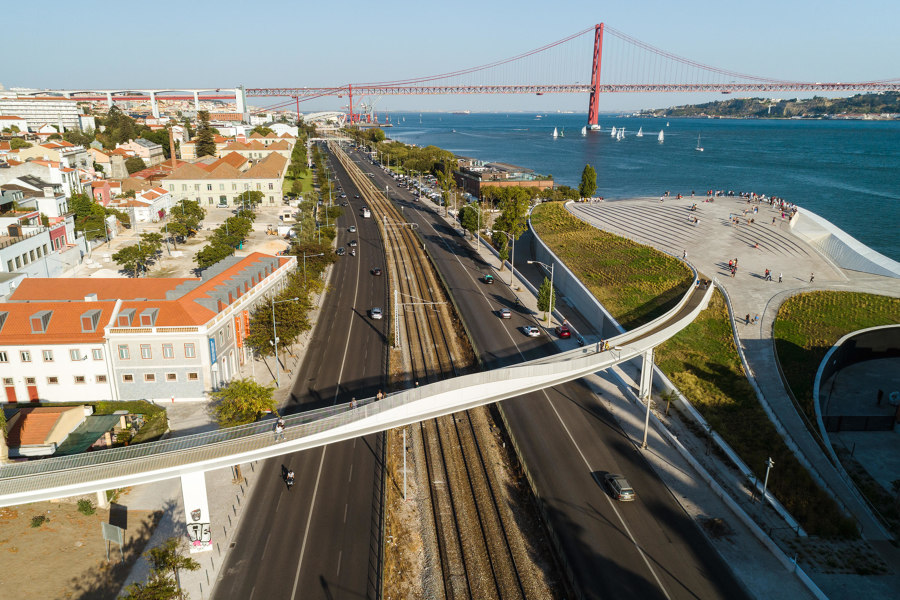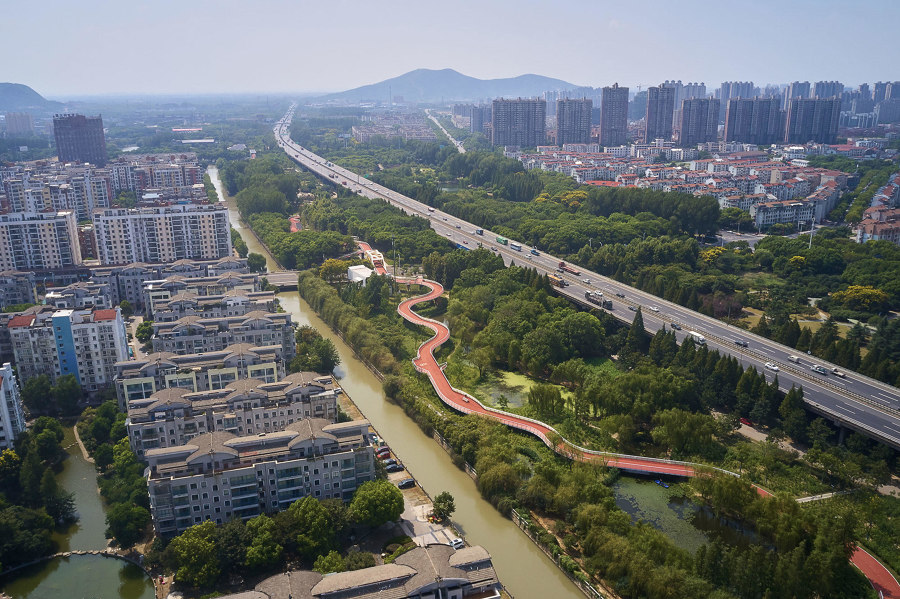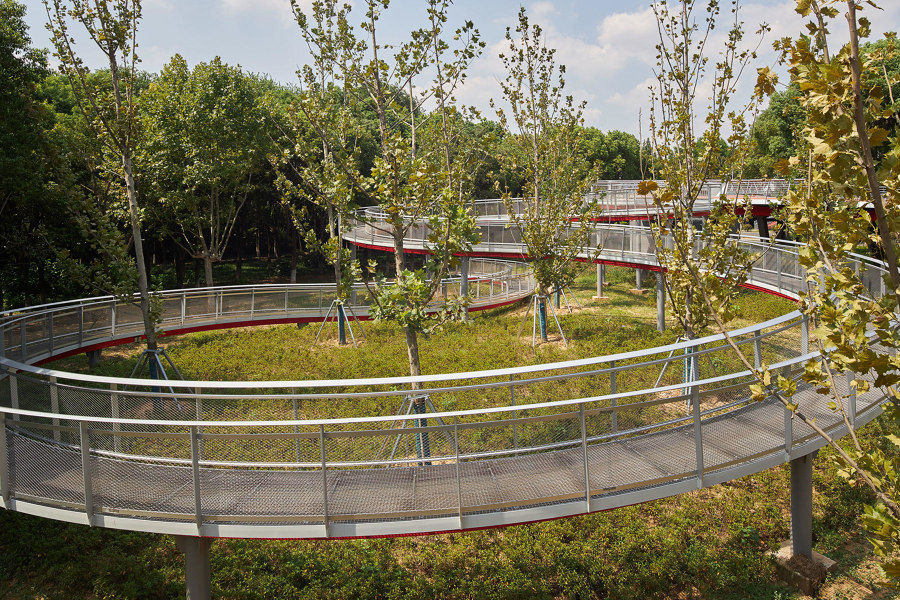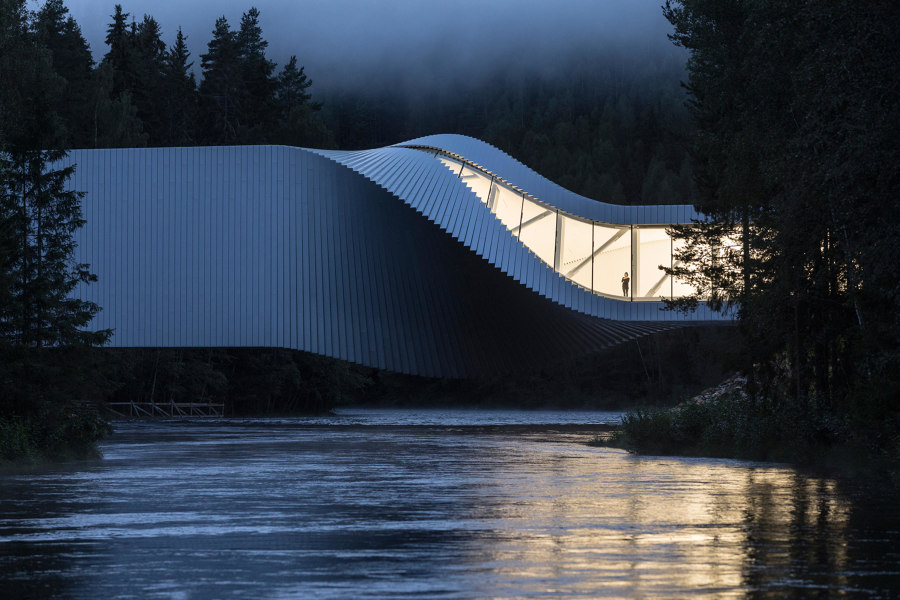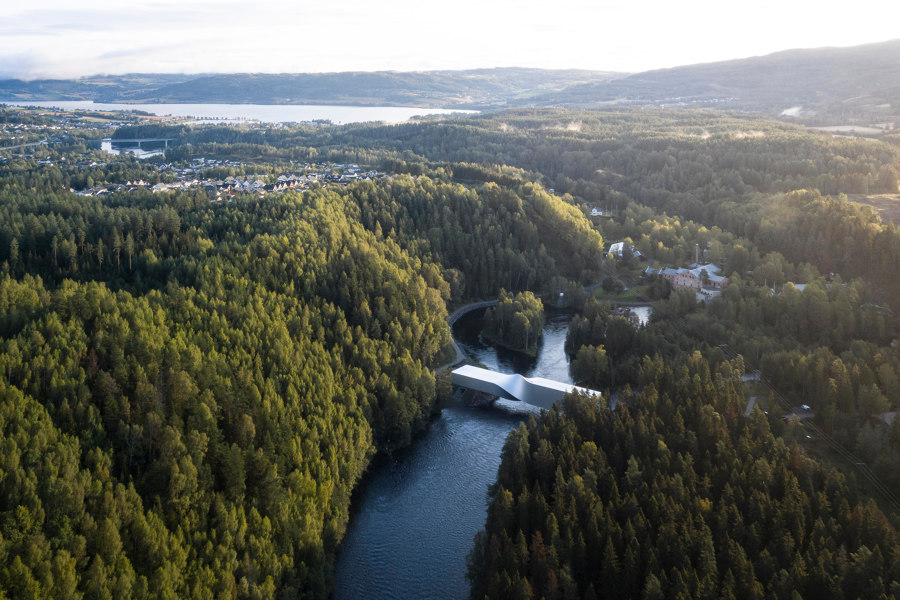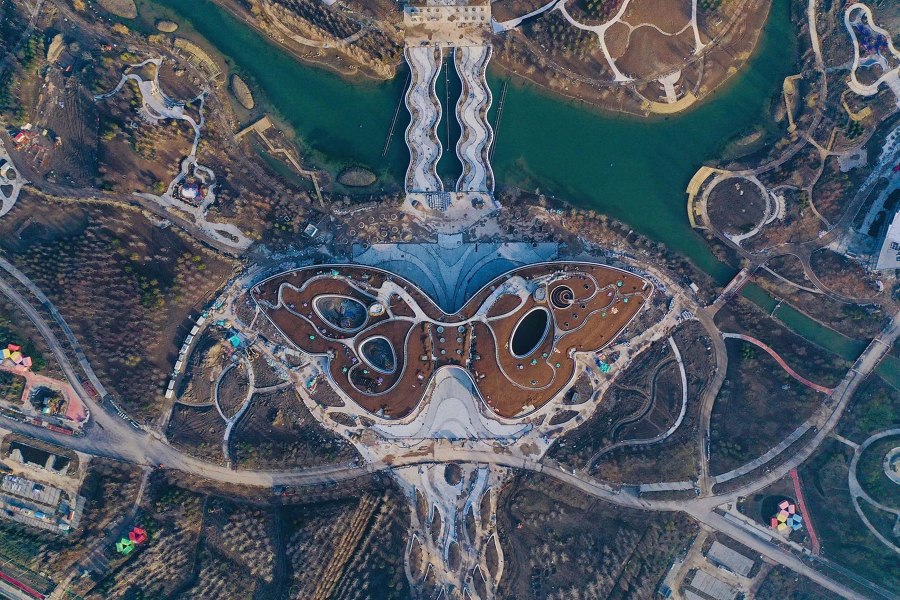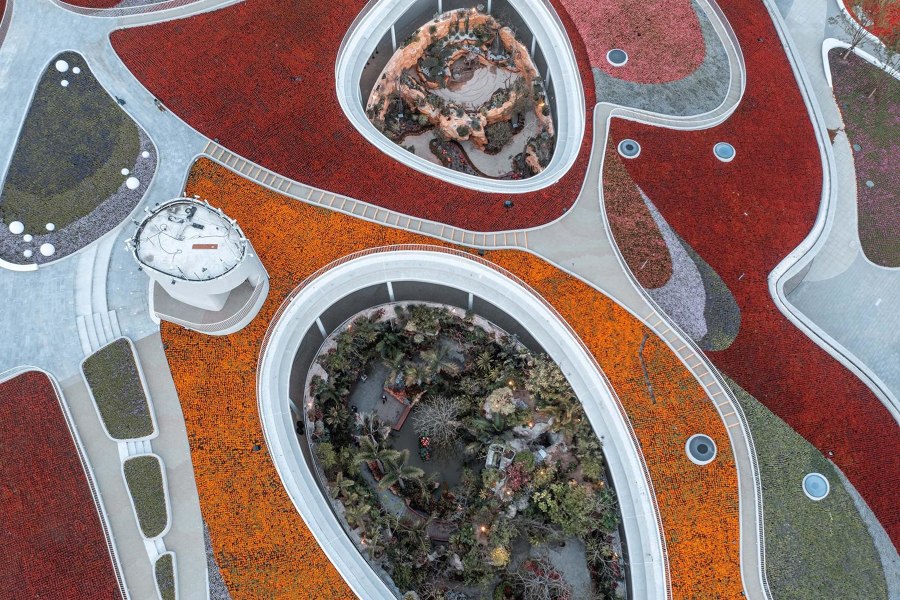Building bridges: five garden bridges that connect users to nature
Text by James Wormald
27.06.22
Green space can be hard to find in modern overgrown cities. These bridges knit together natural areas hidden in urban centres, and connect urbanites with the natural landscapes outside them.
The Twist gallery, by Bjarke Ingels Group, is also a sculpture and bridge in Norway’s Kistefos sculpture park, connecting pieces from world-renowned artists. Photo: Laurian Ghinitoiu

The Twist gallery, by Bjarke Ingels Group, is also a sculpture and bridge in Norway’s Kistefos sculpture park, connecting pieces from world-renowned artists. Photo: Laurian Ghinitoiu
×Bringing nature and greenery back into urban areas seems like an obvious slam dunk for local councils and planning committees. Health and wellbeing, in body, mind and planet, have never been higher on both public and governmental agendas, but neither have other crises such as housing shortages and sinking economies.
For now, at least, city planners and the urbanites they serve, need to make do with what they already have. As these projects show, however, there are special, beautiful spaces in our cities already, and culturally significant spaces in nature, too. We just need a little bit of help to get there.
The MAAT footbridge connects the cultural centre in Lisbon, as well as its views across the water, to the rest of the city. Photos: Gustavo Simões (top), Alexander Bogorodskiy (bottom)
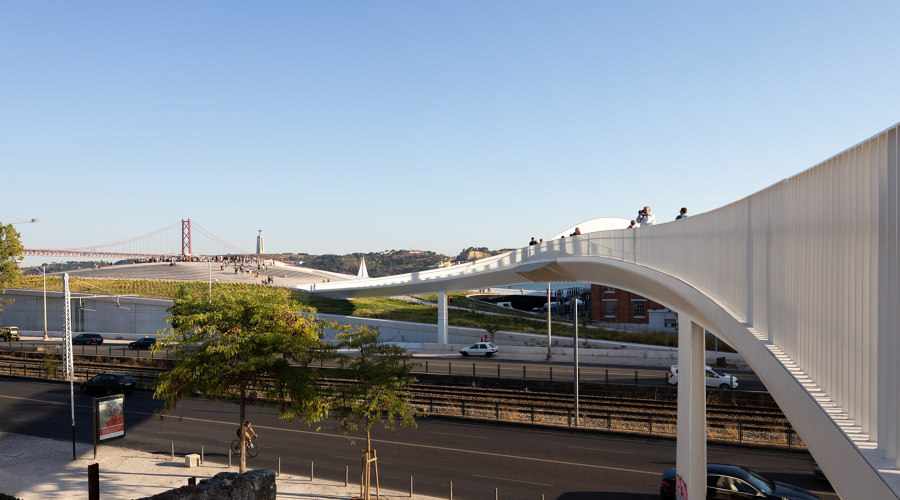
The MAAT footbridge connects the cultural centre in Lisbon, as well as its views across the water, to the rest of the city. Photos: Gustavo Simões (top), Alexander Bogorodskiy (bottom)
×MAAT footbridge by AL_A
Lisbon, Portugal
Although a generous proportion of Lisbon’s centre includes the Parque Florestal de Monsanto, for many inhabitants of the city, their closest respite from the surrounding urban heat is the Tagus estuary, splitting the city in two on its way to greet the Atlantic. On the built-up northern side of the water, however, a busy four-lane highway and rail line make visiting the natural attraction difficult and lengthy at best, or hazardous at worst.
When AL_A pitched the city’s contemporary Museum of Art, Architecture and Technology (MAAT) on the Belém waterfront, treating visitors to breathtakingly serene and rare views across the Tagus, an imperative part of the shapely project was its access, and an equally curvaceous footbridge was included to bring far easier access to the museum and its sights.
Jiangyin’s Greenway Loop meanders through the city’s central parkland (top), integrating features such as its ribbon bridge (middle) and playground (bottom). Photos: Pavel Shubiskiy – Egghead Photo
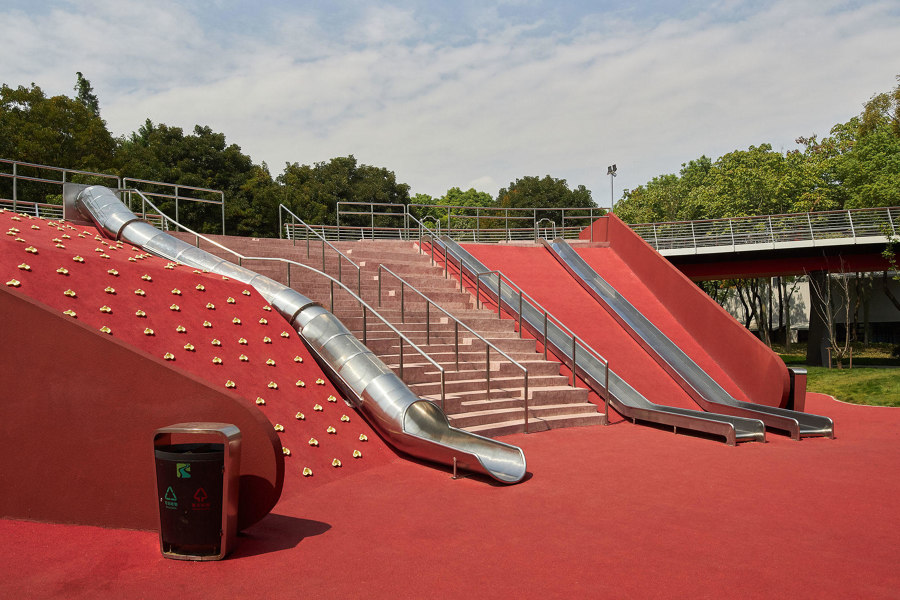
Jiangyin’s Greenway Loop meanders through the city’s central parkland (top), integrating features such as its ribbon bridge (middle) and playground (bottom). Photos: Pavel Shubiskiy – Egghead Photo
×Jiangyin Greenway Loop by Bau Brearley Architects + Urbanists
Jiangyin, Jiangsu, China
In Juangyin, China, a long stretch of parkland runs through the backbone of the city, bringing cleaner air and cooler temperatures to commuters, walkers and cyclists. But with multiple multi-lane roads, rivers and canals splitting the greenery, staying off the beaten track can be tricky.
With multiple multi-lane roads, rivers and canals splitting the greenery, staying on the beaten path can be tricky
By combining eight separate bridges over tarmac and water, the Greenway Loop is a walkway that both attracts users with the promise of an uninterrupted path, and forces them to take in more nature than they bargained for. The serpentine route is, itself, a scaled-down version of the 6,000km Yangtze River, where the pathway points.
The 526m-long glass bridge (top) surface was 4.5cm-thick laminated glass with 99% transparency (middle), for visitors to take in the 200m drop. Photos: Lianzhou Qingtian Tourism Development Co. Ltd
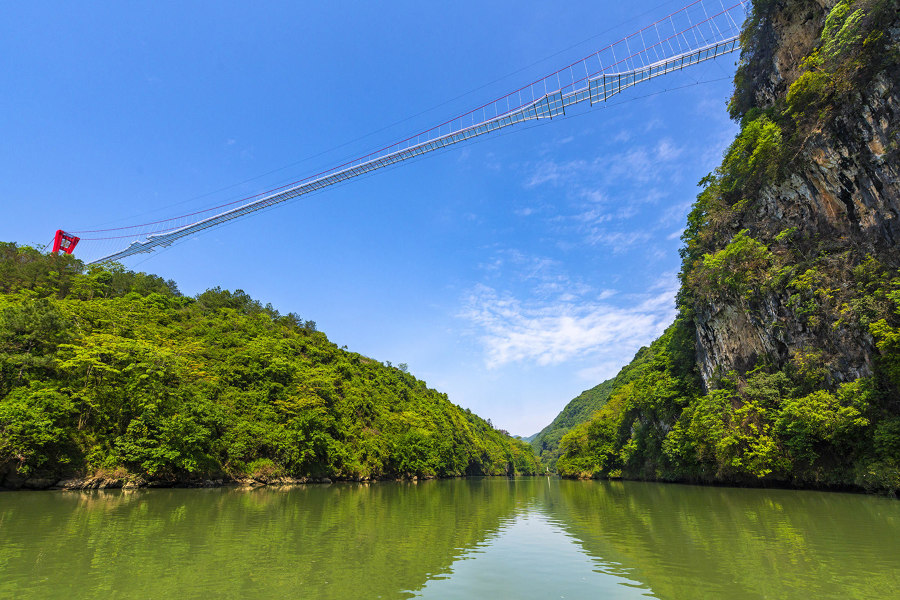
The 526m-long glass bridge (top) surface was 4.5cm-thick laminated glass with 99% transparency (middle), for visitors to take in the 200m drop. Photos: Lianzhou Qingtian Tourism Development Co. Ltd
×Glass bridge by UAD
Lianzhou, China
Scaling things up somewhat, just outside the city of Lianzhou, China, this glass bridge connects one bank of the twisting Lianjiang River, 526 metres across to the other, above a 200m sheer drop. Brave tourists and city day-trippers who successfully force themselves not to look down – through 4.5cm-thick laminated glass with 99% transparency – do get some wonderful views across the Three Gorges area to calm their nerves.
For those who get a little bit of jelly in their legs, however, the bridge widens out into allocated viewing areas at certain points, helping the flow of nervous traffic. Because seemingly floating above a 200m drop is not somewhere you want to run into traffic.
With one half-filled with natural light and the other windowless, The Twist is a bridge, gallery and sculpture twisted into one, with views of the dramatic Norwegian forest. Photos: Laurian Ghinitoiu
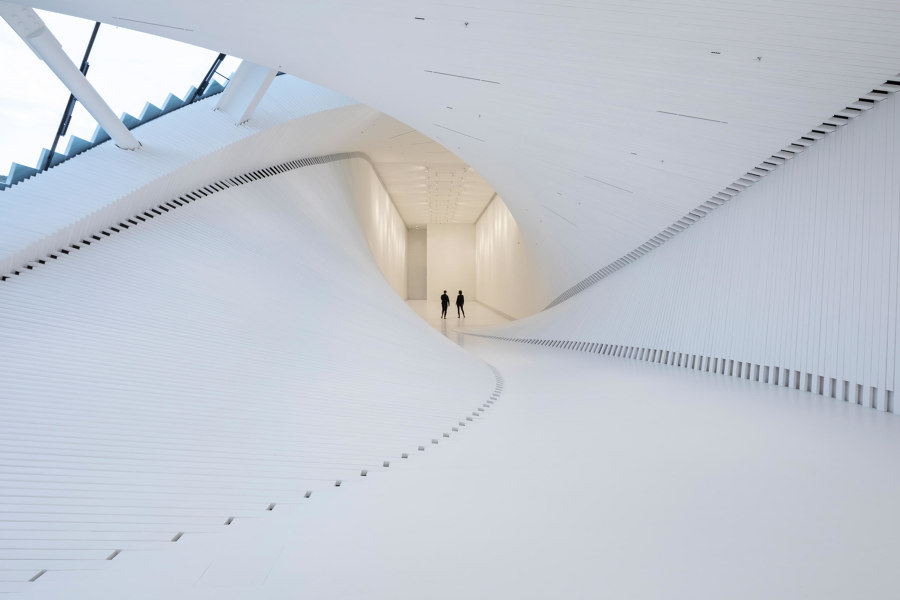
With one half-filled with natural light and the other windowless, The Twist is a bridge, gallery and sculpture twisted into one, with views of the dramatic Norwegian forest. Photos: Laurian Ghinitoiu
×The Twist by BIG / Bjarke Ingels Group
Jevnaker, Norway
At 200m high, the 526m-long glass suspension bridge in Lianzhou gives ample opportunity to see up and down – and directly at – the river. While the topography over in Norway may not share the same depth, the visuals are no less dramatic. Kistefos is an internationally-renowned art museum and sculpture park in an area of forestry around the wild Rostevlna River. The park boasts works from artists such as Anish Kapoor, Tony Cragg and Yayoi Kusama, but BIG / Bjarke Ingels Group’s The Twist bridge might be the most mind-bending of the lot.
The bridge allows visitors to experience the artwork of its construction from inside its utility
The bridge allows visitors to experience the artwork of its construction from inside its utility. The bridge-come-exhibition space format provides a naturally-lit gallery at one end, served by floor-to-ceiling windows where rolling mists are seen making their way through the forest, and a dark gallery at the other. In between the two, is a transformative section where the interior walls are included in its twisted nature.
The butterfly-shaped Century Pavilion lines stepped walkways atop its floral canopy (top), from where ecological installations can be viewed (middle), accessible via rippled bridge. Photos: Wenyi Liu
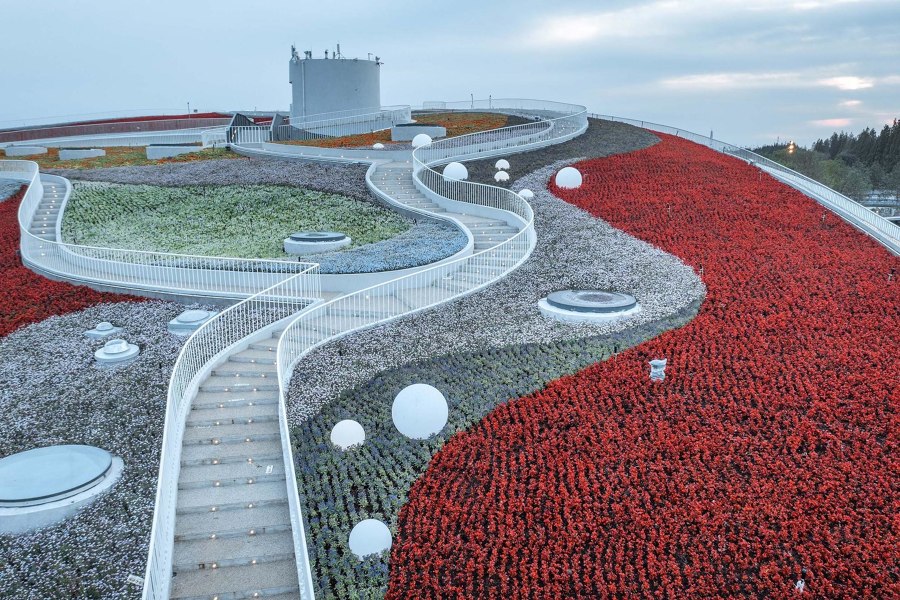
The butterfly-shaped Century Pavilion lines stepped walkways atop its floral canopy (top), from where ecological installations can be viewed (middle), accessible via rippled bridge. Photos: Wenyi Liu
×Century ‘Butterfly’ Pavilion by Ecadi
Shanghai, China
Shanghai is one of the densest and most populous cities in the world, but to the North side of Dongping National Forest Park on the city’s ecologically-devoted Chongming Island, hides the butterfly-inspired, -shaped and -friendly, Century Pavilion. Patiently camouflaged in the centre of a green island that's devoted to allowing nature to retain its place amongst urban zones, the pavilion covers ecological installations with an arched cover of floral-wrapped walkways, giving butterflies and other winged wildlife a new place to call home.
© Architonic

